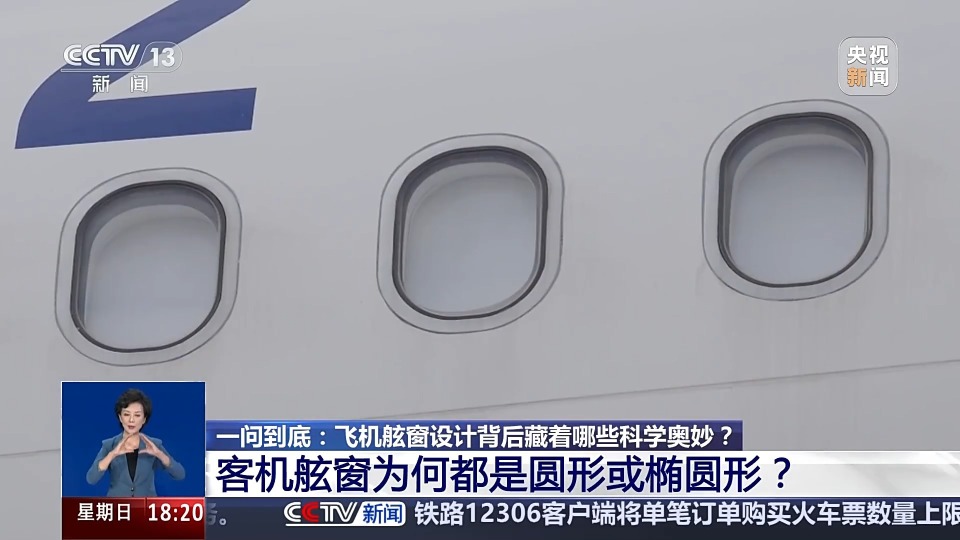随着经济形势的不断变化和政策的调整,房地产市场正面临着新的挑战。房地产红线降价成为了人们关注的焦点。本文旨在探讨房地产红线降价的现象和影响,并提出一些思考和建议。

一、房地产红线降价现象
1.1 降价导火索:供应过剩
随着城市化进程的不断推进,房地产市场供应过剩的现象越来越明显。这导致了市场竞争的激烈化,开发商纷纷通过降价措施来吸引购房者,促销房产。
1.2 经济形势变化:购房能力下降
经济形势的不稳定也直接影响到购房者的购买能力。房价不断攀升,而人民收入的增长速度却远远跟不上。购房压力加大,降价成为一种无奈之举。
1.3 政府调控:“房住不炒”
为了避免房地产市场的过热和房价的过高,政府不断出台严格的调控政策。例如限购、限贷等措施,直接导致了房地产红线降价的现象。
二、房地产红线降价的影响
2.1 刺激购房市场
降价政策无疑会刺激购房者的购买欲望,使得购房市场重新活跃起来。尤其是那些一直在观望的购房者,纷纷抓住降价机会入市,从而推动了市场的健康发展。
2.2 扰乱市场秩序
虽然降价政策能够带来一定的活跃,但也会扰乱市场秩序。尤其是那些本来以较高价格购买房产的购房者,降价后感到被侵害,会对市场产生负面的影响。
2.3 影响开发商利润
降价政策对开发商来说无疑是一个巨大的冲击。他们的利润将受到严重挤压,影响到他们的发展和投资计划,甚至有可能引发经济风险。
三、面临的问题与思考
3.1 供需关系失衡的短期问题
房地产市场降价现象的背后,是供需关系的失衡。一方面,供应过剩导致房价大幅下滑;另一方面,购房者的购买能力限制了房价的上涨。如何解决供需关系的矛盾,成为摆在我们面前的一大难题。
3.2 政策调整的长期路径
对房地产市场的调控无疑需要政府的支持和政策的引导。政府需要在维护市场稳定和保护购房者利益之间保持平衡,通过更加细化的政策措施来引导房地产市场的发展。
四、对策与建议
4.1 完善市场监管机制
政府需要加大对房地产市场的监管力度,加强对开发商的监管,确保降价政策的实施落地。
4.2 调整购房政策
政府应该根据实际情况,适时调整购房政策,提高购房者的购买能力,从而有效缓解房地产红线降价的现象。
4.3 强化房地产市场规范
建立健全的市场规范,提高房地产市场的透明度和公平性,从根本上解决房地产红线降价的问题。
房地产红线降价是市场竞争和调控政策的结果。虽然降价能够刺激市场活跃,但也会带来一系列问题。为了解决这些问题,政府需要加强监管机制,调整购房政策,并加强市场规范化建设。房地产市场才能实现长期稳定发展。
Real Estate Red Line Price Reduction Turning Point or Nightmare?
With the constant changes in the economic situation and policy adjustments, the real estate market is facing new challenges. The reduction of red line prices in the real estate sector has become a focus of attention. This article aims to explore the phenomenon and impact of the red line price reduction in the real estate industry and provide some thoughts and suggestions.
1. Phenomenon of Red Line Price Reduction in Real Estate
1.1 Trigger for price reduction Oversupply
With the continuous progress of urbanization, the oversupply of the real estate market has become increasingly apparent. This has led to intense market competition, prompting developers to attract homebuyers and promote property sales through price reduction measures.
1.2 Economic situation changes Declining purchasing power
The instability of the economic situation directly affects the purchasing power of homebuyers. While housing prices continue to rise, the growth rate of people's income lags far behind. The pressure of purchasing a house increases, and price reduction becomes a necessary move.
1.3 Government regulation "Housing is for living, not for speculation"
In order to avoid an overheated real estate market and excessively high house prices, the government has implemented strict regulatory policies. Measures such as purchase restrictions and loan restrictions directly lead to the phenomenon of red line price reduction in the real estate market.
2. Impact of Red Line Price Reduction in Real Estate
2.1 Stimulating the housing market
The price reduction policy undoubtedly stimulates the desire of homebuyers to purchase, making the housing market active again. Especially for those who have been waiting, they seize the opportunity of price reduction and enter the market, thereby promoting the healthy development of the market.
2.2 Disrupting market order
Although the price reduction policy can bring certain activity, it can also disrupt the market order. Especially for those homebuyers who originally purchased properties at higher prices, they may feel violated after the price reduction, which will have a negative impact on the market.
2.3 Impacting developer profits
The price reduction policy is undoubtedly a huge blow to developers. Their profits will be severely squeezed, affecting their development and investment plans, and even causing economic risks.
3. Issues and Reflections
3.1 Short-term problem of supply and demand imbalance
Behind the phenomenon of price reduction in the real estate market is the imbalance of supply and demand. On the one hand, oversupply leads to a significant decline in housing prices; on the other hand, the purchasing power of homebuyers restricts the rise in housing prices. How to solve the contradiction between supply and demand is a major challenge we face.
3.2 Long-term path of policy adjustment
Regulating the real estate market undoubtedly requires government support and policy guidance. The government needs to maintain a balance between maintaining market stability and protecting the interests of homebuyers, and guide the development of the real estate market through more detailed policy measures.
4. Strategies and Suggestions
4.1 Improve market supervision mechanisms
The government needs to strengthen supervision of the real estate market, enhance supervision of developers, and ensure the implementation of price reduction policies.
4.2 Adjust housing purchase policies
The government should adjust housing purchase policies in a timely manner according to the actual situation, improve the purchasing power of homebuyers, and effectively alleviate the phenomenon of red line price reduction in the real estate market.
4.3 Strengthen real estate market regulations
Establish a sound market regulation system, improve the transparency and fairness of the real estate market, and fundamentally solve the problem of red line price reduction in the real estate sector.
Conclusion
The reduction of red line prices in the real estate market is the result of market competition and regulatory policies. Although price reduction can stimulate market activity, it also brings a series of issues. To solve these problems, the government needs to strengthen supervision mechanisms, adjust housing purchase policies, and strengthen market standardization construction. Only in this way can the real estate market achieve long-term stable development.
房地产红线降价什么意思?
让我们来关注一些引人注目的数据。房地产市场一直备受关注,人们对于房价的波动和变化十分敏感。最近出现的一个新词引起了广泛的关注和讨论,那就是“红线降价”。房地产红线降价到底是什么意思呢?本文旨在通过分析房地产红线降价的含义、原因和影响,帮助读者更好地理解这一概念。

我们将介绍文章的主要内容和结构。本文将从三个方面进行解释房地产红线降价的含义和背景;分析导致红线降价的原因;探讨房地产红线降价对市场和消费者的影响。
关于房地产红线降价的含义,它指的是开发商或房屋卖方为了吸引购房者,主动降低房价,使房屋售价降至或接近规定的最低限价线。这是一种市场竞争策略,也是对市场需求和经济形势的一种应对。
导致红线降价的原因是什么呢?市场供过于求是主要原因之一。随着房地产市场的调控政策的逐渐收紧,购房者的购房需求逐渐减弱,供大于求的局面逐渐形成。为了应对市场需求的下降,开发商只能选择降价来吸引购房者,以完成销售目标。
经济形势的不稳定也是红线降价的原因之一。全球经济格局的变化和国内经济下行压力使得购房者对于未来的经济发展存在担忧,购房意愿减弱。为了刺激市场需求,开发商降低房价成为一种必然选择。
红线降价对市场和消费者会有什么样的影响呢?从市场角度来看,红线降价可能会引发市场恶性竞争,导致整个房地产市场陷入价格战的困局。而对于消费者来说,降价意味着购房成本的降低,对于一些有购房需求的家庭来说是一种利好消息。但也需要警惕开发商通过降低房价来降低房屋质量等不良后果。
房地产红线降价是开发商为了应对市场需求下降和经济形势不稳定而主动降低房价的一种策略。这种降价对市场和消费者都有一定的影响,需要在政府的监管下,合理引导市场发展。对于购房者来说,选择时需谨慎,要充分考虑房地产市场的变化和相关政策的影响,以做出明智的决策。
通过本文的分析,读者可以更好地理解房地产红线降价的含义、原因和影响。这将有助于读者在购买房屋时做出明智的选择,并为房地产市场的健康发展提供一些思考和建议。希望本文对读者有所启发,引起对于房地产市场波动的关注和思考。
房企红线2021:挑战与机遇

2021年,中国房地产市场面临着一系列的调控政策和行业红线的限制,这引发了广泛的关注和讨论。房企红线对于行业发展意味着什么?本文将深入探讨房企红线对房地产行业的影响,以及可能带来的挑战和机遇。
1. 房企红线的背景和意义
2. 房企红线对房地产行业的影响
3. 房企红线可能带来的挑战
4. 房企红线中的机遇
5. 总结与展望
房企红线的背景和意义:
随着中国经济的快速发展,房地产市场的火爆也引起了政府的关注。为了遏制房价过快上涨和防范金融风险,政府出台了一系列的调控政策,其中包括对房企的红线限制。房企红线是指对房地产企业负债率、资产负债率、土地购置费用负债率等指标的限制,控制其借贷规模和杠杆水平。房企红线的出台旨在引导房地产市场健康发展,减少行业风险,这对于行业的可持续发展具有重要意义。
房企红线对房地产行业的影响:
房企红线的实施对于房地产行业的影响不可忽视。房企的融资成本将上升,贷款额度受限,这将对房地产项目的开发和销售产生一定的不利影响。房企的盈利能力可能会下降,资金链压力增大,这将进一步加剧行业的竞争激烈程度。第三,房企红线的引入也有助于平衡房地产市场供需关系,避免过度投资和产能过剩问题,从而推动行业的结构调整和优化。
房企红线可能带来的挑战:
房企红线的实施必然会给房地产行业带来一系列的挑战。房企需要调整其资金结构,加强内部资金管理和运营能力,以应对融资渠道的收紧和融资成本的上升。房企需要加大对项目的风险控制和市场预判力度,避免出现大规模投资失败的情况。房企还需加强与金融机构的合作与沟通,寻求更多的融资渠道和资源支持。
房企红线中的机遇:
即使房企红线带来了一定的挑战,但也同时孕育了一些机遇。房企可以通过优化资产负债结构,加大对自有资金的运用和管理,提高盈利能力和效益水平。房企可以借助房地产市场的升级和创新,拓展与科技、金融等领域的合作,寻求新的增长点和发展机遇。政府在推动房地产市场健康发展过程中也会提供一定的政策支持和扶持,这为房企带来了更多的机遇和空间。
总结与展望:
房企红线是当前房地产市场调控的重要举措,对行业的发展产生着深远的影响。面对红线限制带来的挑战,房企需要加强内部管理,提升自身实力和竞争力。房企也应抓住红线中的机遇,积极转型升级,寻求新的发展模式和增长点。房地产行业才能实现可持续发展,为经济社会的进步做出更大的贡献。
让我们一起思考,房企红线对于行业发展来说,是一种制度约束还是一个推动转型的契机?如何在红线限制下实现持续创新和发展,成为房企需要面对的重要课题。
























